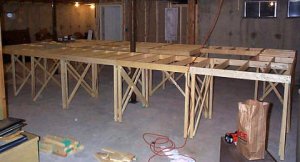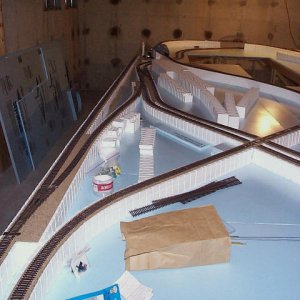Yippee! Done with the frame of the benchwork. Used L-girder construction--kids helped thinking it was a workbench for myself. Now to install risers--without a definite track plan as yet, do you install risers or wait until a plan is in place? Using 5/8" plywood with blue styrofoam panel (not the bead stuff) over it. Can you use any paint with the styrofoam? Guys, really appreciate all the help you've given!!
Gregg
Gregg








